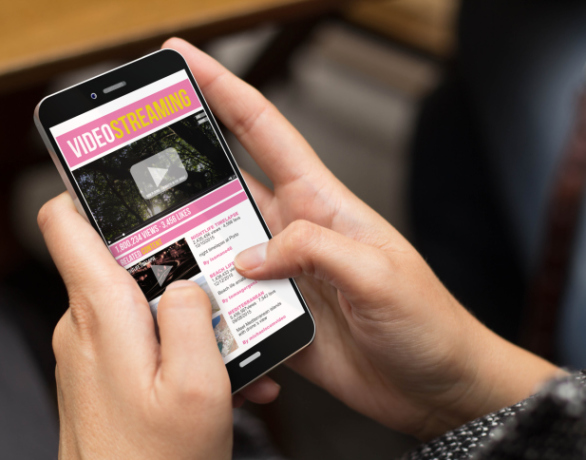The most effective digital marketing for finance businesses
In-app advertising continues to be a growing trend in marketing. Earlier this year, a report into apps and behaviour patterns in Great Britain, commissioned by Google and produced by Ipsos MORI, investigated the potential of mobile apps and websites as an effective advertising channel.
The results demonstrated clearly that in-app advertising is effective both at reaching decision makers and in driving action. There are five main reasons that this is the case:
Users spend increasingly more time using apps
Ofcom recently revealed that the average person in the UK spends 24 hours a week online:, twice as long as 10 years ago. One in five of all adults spends up to 40 hours a week online. The image below shows the growth of popularity in different devices over the past decade – “the decade of the smartphone” in the eyes of many. And rightly so – given that smartphone usage has increased from 17% to 78% in the past decade.
Within the increased smartphone usage, there is different behaviour for different apps. For example, news app users are likely to browse content up to three times a day, whilst those who prefer entertainment apps may immerse themselves in programmes or games for up to seven hours a week.
Shopping apps are another popular category of app, as users become increasingly comfortable browsing and making in-app purchases. Add to that social media apps such as Instagram and Facebook, and it is clear that in-app presents a unique opportunity for marketers to reach users frequently and at various times when other marketing channels cannot. For example just before or after sleeping, when travelling or during meal-times.
Ads within apps create a strong connection
Interestingly it is not only the time spent in apps that make them a good opportunity for advertising but also the fact that viewing ads via an app or mobile website seems to forge a stronger connections with brands than viewing on a PC or laptop. Evidence suggests that users remember more details of an ad when viewed on apps and mobile websites. This may be due to the higher level of user engagement with apps, and also the fact that in-app ads tend to be more visually appealing than ads on other channels.
People viewing on apps are more likely to feel positive about a brand
Leading on from the above, around half of people viewing in-app ads are likely to feel positive about the brand and want to interact with it in the future. This compares with only around a third of PC viewers saying the same thing. Again, this seems to be related to the more personal nature of mobile devices, and their regular use – particularly during leisure time. These contextual factors are the ideal breeding ground for a user to be open to relevant advertising and to feel a closer connection to those brands that do it.
In-app ads are effective at inspiring action
In-app advertising is proving effective at inspiring actions such as making a purchase or booking an event or accommodation. 51% of smartphone users are more likely to do this after seeing an ad, compared with 41% of PC users. This is particularly so when the in-app ad is used to target a specific audience, either by category or location.
In-app advertising makes people more likely to want to buy a product/service from the brand
Linking back to the above discussion about in-app ads being more memorable than other channels, this also makes them more effective for driving action. Around 39% of people credit in-app ads with them wanting to buy a product or service from the brand, as compared with 23% of PC users.
If you are planning an in-app advertising campaign, there are various different ad formats to consider. Four of the main ones are as follows:
- Banner ads
This is the oldest and most standard format but can be irritating to users so not necessarily the most effective. Banner ads tend to be limited in terms of creativity, simply using text and/or images at the top or bottom of a screen. They can be distracting and intrusive and easy to click by accident which can lead to a negative reaction. - Interstitial ads
These are full-screen in-app ads that appear during transitions in content, so are less intrusive. They may contain video or text and will be more immersive than banner ads. However, it is important to ensure that any interstitial ads are relevant so that the user is interested in viewing them rather than just trying to clear them from the screen. - Native ads
These are ads that are designed to look more like content so that they blend in with the overall look and feel of an app. Because of this, they can generate much higher levels of engagement than a standard banner ad. However, CPM is likely to be higher. - Rewarded video
This is one of the newest ad formats. It offers something to the user in exchange for watching or interacting with an ad. For example Spotify’s Sponsored Session feature offers its free service users the opportunity to enjoy 30 minutes of free music streaming if they watch an in-app brand video.
So overall there is plenty of evidence to show that in-app advertising deserves a place in your digital marketing strategy. We hope that this article will help you to get started. It is a topic that we will return to in due course so do check back here soon!
